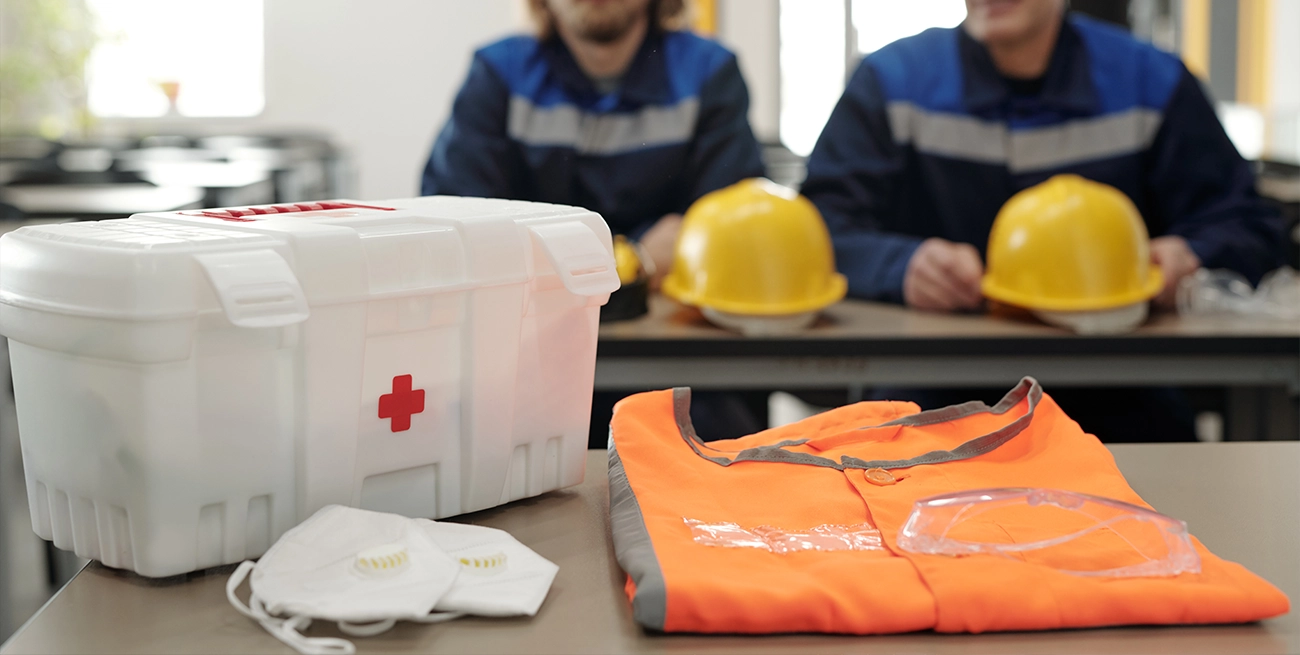Creating an Emergency Kit: Must-Have Supplies for Industrial Facilities

Emergencies don’t announce themselves, and when things go wrong in an industrial setting, the stakes are high. Whether it's a chemical spill, power outage, or fire, a well-stocked emergency kit can mean the difference between chaos and control. Anyone responsible for purchasing industrial supplies knows that skimping on safety is not an option. Here’s what you need to have on hand to keep operations steady when the unexpected happens.
Power and Lighting: Keeping the Worksite Visible and Functional
When the lights go out, everything else grinds to a halt. Industrial facilities need more than just a few flashlights tossed in a drawer. Heavy-duty, rechargeable LED work lights with magnetic bases allow for hands-free operation, ensuring workers can continue tasks safely. Headlamps with adjustable beams and long battery life give individuals the ability to navigate complex machinery in the dark. Don’t forget industrial-grade backup power sources—generators and uninterruptible power supplies (UPS) should be in place to keep critical systems running.
First Aid: Treating Injuries on the Spot
Factories, warehouses, and processing plants aren’t exactly injury-free zones. The usual adhesive bandages and antiseptic wipes won’t cut it in a facility where heavy machinery is in play. Stock up on trauma kits with tourniquets, hemostatic dressings, and burn treatments. Eyewash stations should be strategically placed, and portable saline solutions must be available for quick response to chemical exposure. Consider automated external defibrillators (AEDs) as well—cardiac events can strike anyone, and immediate treatment saves lives.
Fire Suppression: Stopping a Disaster Before It Spreads
Fire extinguishers are non-negotiable, but not just any kind will do. Different work environments demand different extinguishers—Class D for combustible metals, Class K for grease fires, and ABC for general use. Fire blankets offer a quick way to smother small flames, especially in areas with flammable liquids. Having a well-marked emergency exit plan, along with glow-in-the-dark signage and backup lighting, ensures employees can evacuate safely if needed.
Respiratory Protection: Breathing Safe When Air Quality Drops
A chemical spill or dust explosion can quickly turn breathable air into a hazard. Respirators should be part of any emergency kit, ranging from N95 masks for minor air contaminants to full-face respirators with cartridges rated for specific chemical exposures. Escape hoods that provide short-term protection from smoke or toxic fumes are essential for sites working with volatile substances. Keep extra filters on hand—there’s nothing worse than grabbing a respirator only to find the cartridges expired.
Spill Control: Containing Leaks Before They Escalate
Oil, coolant, solvents—industrial facilities are filled with liquids that can create hazards in an instant. Absorbent pads, booms, and spill containment kits should be easily accessible in areas prone to leaks. For chemical spills, neutralizing agents should match the substances in use. A good rule of thumb? Have at least one kit per work zone and make sure employees know where to find them.
Communication Tools: Staying in Touch When Systems Fail
A power failure can knock out intercoms and PA systems, making it difficult to relay urgent messages. Two-way radios with extra batteries ensure team members can communicate even if cell service is down. Loud, hand-crank emergency sirens help alert workers in noisy environments. A dedicated satellite phone might seem like overkill, but when standard networks fail, it’s often the only way to reach emergency services.
Personal Protection: Equipping Workers for the Worst
When an emergency strikes, every second counts, and scrambling to find protective gear wastes valuable time. Every emergency kit should include heat-resistant gloves, cut-resistant sleeves, safety goggles, and protective coveralls. For extreme weather events, thermal blankets and rain-resistant gear keep employees safe during evacuations. Have extras—personal protective equipment (PPE) isn’t useful if it’s not readily available for everyone who needs it.
Food and Water: Sustaining the Workforce in Extended Emergencies
Not every emergency resolves in minutes or hours. Prolonged power outages, severe weather events, and hazardous material incidents can force workers to stay put. Shelf-stable food bars and high-calorie emergency rations provide sustenance without requiring preparation. Water filtration systems or purification tablets supplement bottled water supplies, ensuring hydration even when tap water isn’t safe to drink.
Emergency Tools: Multi-Purpose Gear That Comes in Handy
When things go sideways, the right tool can make all the difference. Keep industrial-grade utility knives, pry bars, bolt cutters, and multi-tools in emergency kits. Fire-resistant tarps can help contain small fires or provide temporary shelter. Lockout/tagout kits prevent accidents during unexpected shutdowns. If your facility has confined spaces, retrieval systems with harnesses and lifelines should be included.
Documentation and Training: Making Sure Supplies Aren’t Useless
Having all the right gear means nothing if workers don’t know where to find it or how to use it. Emergency supplies should be clearly labeled, and storage locations must be easy to access. Conduct regular training so employees know how to use first aid equipment, fire extinguishers, and spill containment materials. A printed emergency action plan should be available in multiple locations, detailing steps to take in various scenarios.
The Last Thing You Want Is Regret
No one ever looks back on an emergency and wishes they’d been less prepared. Industrial facilities run on efficiency, but when disaster strikes, it’s the ability to react that keeps people safe and operations intact. Invest in the right supplies now, because in the moment you need them, there won’t be time for second thoughts.


